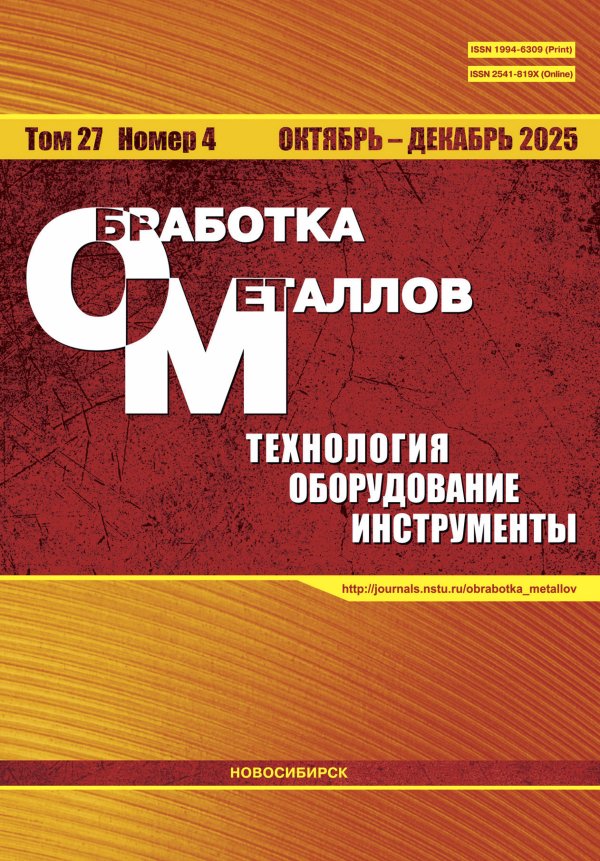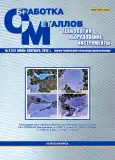ОПТИМАЛЬНЫЙ ВЫБОР ТЕХНОЛОГИИ ЛАЗЕРНОЙ РЕЗКИ ТОЛСТЫХ СТАЛЬНЫХ ЛИСТОВ
- Авторы: Голышев А.А.1, Оришич А.М.1, Шулятьев В.Б.1
-
Учреждения:
- Институт теоретической и прикладной механики им. С.А. Христиановича СО РАН
- Выпуск: № 3 (2016)
- Страницы: 15-22
- Раздел: ТЕХНОЛОГИЯ
- URL: https://bakhtiniada.ru/1994-6309/article/view/302137
- DOI: https://doi.org/10.17212/19946309201631522
- ID: 302137
Цитировать
Полный текст
Аннотация
Ключевые слова
Об авторах
Александр Анатольевич Голышев
Институт теоретической и прикладной механики им. С.А. Христиановича СО РАН
Email: alexgol@itam.nsc.ru
ул. Институтская, 4/1, г. Новосибирск, 630090, Россия
Анатолий Митрофанович Оришич
Институт теоретической и прикладной механики им. С.А. Христиановича СО РАН
Email: orishich@itam.nsc.ru
ул. Институтская, 4/1, г. Новосибирск, 630090, Россия
Виктор Борисович Шулятьев
Институт теоретической и прикладной механики им. С.А. Христиановича СО РАН
Email: shulyat@rambler.ru
ул. Институтская, 4/1, г. Новосибирск, 630090, Россия
Список литературы
- LIA handbook of laser materials processing / eds.: J.F. Ready, D.F. Farson, T. Feeley. - 1st ed. - Berlin; Heidelberg: Springer-Verlag, 2001. - 715 p. - ISBN 978-3-540-41770-5.
- Steen W.M., Mazumder J. Laser material processing. - 4th ed. - London: Springer-Verlag, 2010. - 558 p. - ISBN 978-1-84996-061-8. - doi: 10.1007/978-1-84996-062-5.
- Взаимодействие лазерного излучения с металлами / А.М. Прохоров, В.И. Конов, И. Урсу, И.Н. Михайлеску. - М.: Наука, 1988. - 538 с.
- Laser-oxygen cutting of mild steel: the thermodynamics of the oxidation reaction / J. Powell, D. Petring, R.V. Kumar, S.O. Al-Mashikhi, A.F.H. Kaplan, K.T. Voisey // Journal of Physics D: Applied Physics. - 2009. - Vol. 42. - P. 015504. - doi: 10.1088/0022-3727/42/1/015504.
- The theory of laser material processing / ed.: J. Dowden. - Dordrecht: Springer, 2009. - 381 p. - ISBN-13 978-1-4020-9339-5. - doi: 10.1007/978-1-4020-9340-1.
- Rajpurohit S.R., Patel D.M. Striation mechanism in laser cutting - the review // International Journal of Engineering Research and Applications. - 2012. - Vol. 2, iss. 2. - P. 457-461.
- Diagnostics, modeling and simulation: three keys towards mastering the cutting process with fiber, disk and diode lasers / D. Petring, T. Molitor, F. Schneider, N. Wolf // Physics Procedia. - 2012. - Vol. 39. - P. 186-196. - doi: 10.1016/j.phpro.2012.10.029.
- Fundamental study of CO2- and fiber laser cutting of steel plates with high speed visualization technique / G.V. Ermolaev, P.V. Yudin, F. Briand, A.V. Zaitsev, O.B. Kovalev // Journal of Laser Applications. - 2014. - Vol. 26. - P. 042004. - doi: 10.2351/1.4895563.
- High-quality beam generation in a 8 kW cw СО2 laser / Yu.V. Afonin, A.P. Golyshev, A.I. Ivanchenko, A.N. Malov, A.M. Orishich, V.A. Pechurin, V.F. Filev, V.B. Shulyat’ev // Quantum Electronics. - 2004. - Vol. 34, N 4. - P. 307-309. - doi: 10.1070/QE2004v034n04ABEH002671.
- Experimental study of laser-oxygen cutting of low-carbon steel using fibre and CO2 lasers under conditions of minimal roughness / A.A. Golyshev, A.G. Malikov, A.M. Orishich, V.B. Shulyatyev // Quantum Electronics. - 2014. - Vol. 44, N 10. - P. 970-974. - doi: 10.1070/QE2014v044n10ABEH015412.
- O’Neill W., Gabzdyl J.T. New developments in laser-assisted oxygen cutting // Optics and Lasers in Engineering. - 2000. - Vol. 34, iss. 4-6. - P. 355-367. - doi: 10.1016/S0143-8166(00)00070-1.
- Газодинамика лазерной резки толстых стальных пластин непрерывным СО2-лазером / А.В. Зайцев, О.Б. Ковалев, А.М. Оришич, В.М. Фомин, В.Б. Шулятьев // Вычислительные технологии. - 2006. - Т. 11, спец. вып., ч. 1. - С. 74-83.
- Gladush G.G., Smurov I. Physics of laser material processing. - Berlin: Springer-Verlag, 2011. - 534 p. - ISBN 978-3-642-19242-5. - doi: 10.1007/978-3-642-19831-1.
- Powell J. LIA guide to laser cutting. - 2nd ed. - Orlando: LIA Publ., 2008. - 104 p. - ISBN 978-0-912035-16-1.
- Голышев А.А. Стандартизации лазерно-кислородной резки по критерию шероховатости поверхности // Обработка металлов (технология, оборудование, инструменты). - 2016. - № 1 (70). - С. 16-21. - doi: 10.17212/1994-6309-2016-1-16-21.
Дополнительные файлы







